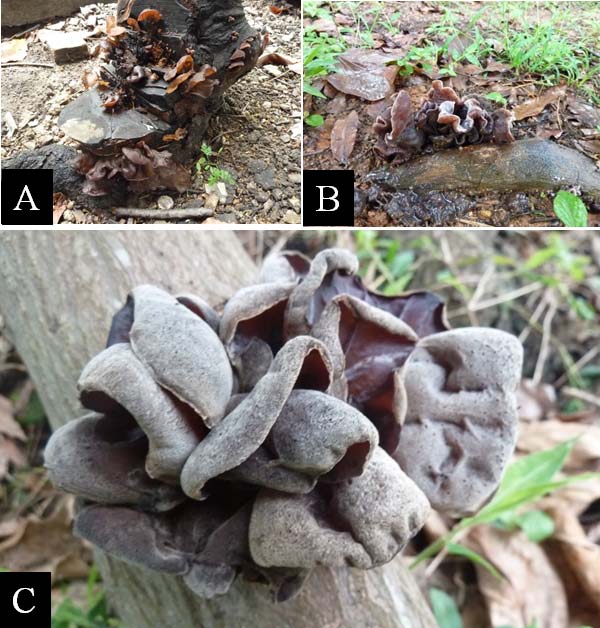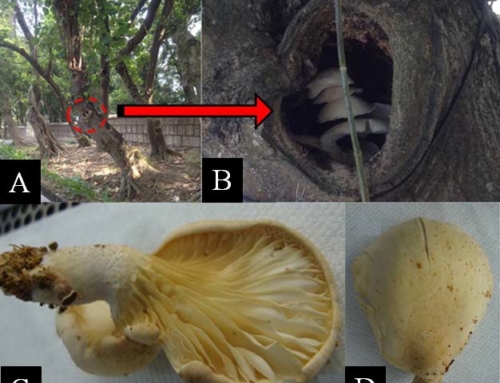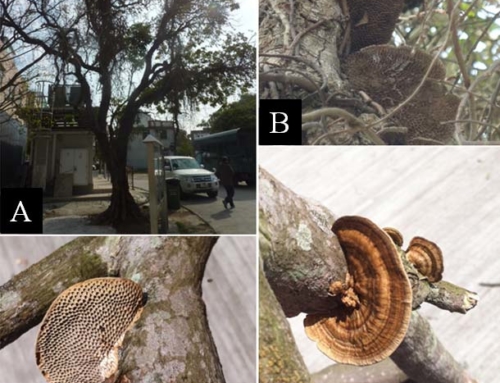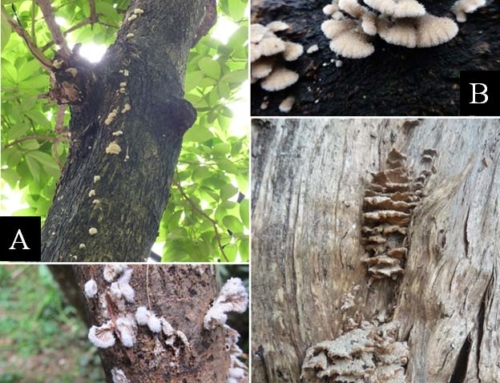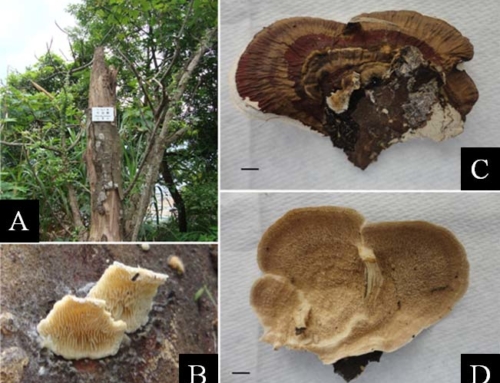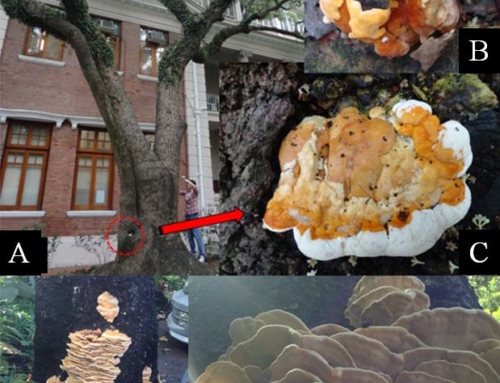Fruiting Body
Fruiting bodies annual, 4-16 cm wide, resupinate or pileate, loosely attached, laterally and sometimes by a very short stalk, elastic, gelatinous, hymenium smooth, or wrinkled, pale brown to dark brown to blackish brown with a whitish boom, sterile surface dark yellowish brown to dark brown with greyish brown bands, hairy, silky; hairs up to 0.6mm long,
thick-walled; basidia 46-60μm × 4-5.5 μm, cylindrical, hyaline, 3-septate, with 1-3 lateral sterigmata; spores 13-16μm × 4-5.5 μm, reniform to
allantoid, hyaline, guttulate.
Distribution and Host Range
This fungus is widely distributed throughout the world. Locally, it is found on broadleaved trees, such as Acacia confusa, Aleurites moluccana, Celtis sinensis and Ficus microcarpa in urbanised setting along roadsides, on slopes and in parks.
Signs and Symptoms
This fungus is found associated with surface of pruning wounds, dying and dead branches as well as dead trees. Fresh pruning cuts and dying/dead
branches with defoliation are locations to observe for the fungus. Fruiting bodies serve as obvious sign for this species.
Pathology
It is a saprotrophic fungus with the ability to cause white rot decay on dead and decaying wood tissue.
Management and Control
Risk category: Insignificant (GREEN) Although there is insignificant concern on tree health and structural stability due to the presence of this fungus, the trees should be checked for the presence and extent of localised decay in the region where fruiting bodies are observed. Branches with weak attachment observed with sign of this fungus should be removed.
Citation: Note on Common Wood Decay Fungi on Urban Trees of Hong Kong

